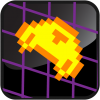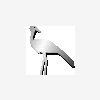Strategy in Turn Based RPGs
I'm thinking about creating an old-school turn based strategy RPG, and am trying to come up with ways to add more strategy to the battles. What are some of the ways that you've seen this done well in the past? -Shane
Done well in the past? Screw the past! [smile] Instead of scavenging old games for parts, why not come up with all new ways to add strategy to the battles?
How do the battles play out? "Old-school turn based" could be Dragon Quest, Ultima, or Warhammer-style... how does the basic battle mechanic work, and maybe we can help you figure out new ways to add depth to it.
How do the battles play out? "Old-school turn based" could be Dragon Quest, Ultima, or Warhammer-style... how does the basic battle mechanic work, and maybe we can help you figure out new ways to add depth to it.
Check out my new game Smash and Dash at:
Is it set in the past or the future? If I were going to build a futuristic turn based strategy RPG, most of my focus would be on futuristic gadgets. Proximity bombs, trip wires, motion detectors, etc. Futuristic gadgets have unlimited usefulness potential. I suppose magic could be used in much the same way.
Quote:
Original post by shane1985
I'm thinking about creating an old-school turn based strategy RPG, and am trying to come up with ways to add more strategy to the battles. What are some of the ways that you've seen this done well in the past?
-Shane
Role-Playing-Game with individuals being the main 'units' probably then really is 'tactics', though if its across a sequence of settings/scenarios where resources must be conserved or choice of exit points effects conditions for the next scenario (ie- a strategic retreat to wait for a more advantageous battle field...) then it could be classified as strategy.
One method might be to have to plan out movements 3 turns ahead (lock them in) so the player must t consider the consequences of the moves leading up to a particular goal.
Combinations (Combined Arms like in Napoleonics) where complementary use of different unit types increase advantages.
--------------------------------------------[size="1"]Ratings are Opinion, not Fact
Thanks for the responses! I agree, I'd rather come up with something more unique to add strategy. When I say old school turn based RPG, I'm talking like the early FF games. Right now the battles play out like the crappy older RPGs, where you just spam the attack button. haha I also don't just want to do the fire, ice, lightning idea, where once you figure out the enemy's weakness there is no more strategy.
It's probably going to be set in the future.
It's probably going to be set in the future.
You could include the use of Terrain. Have locations in the Battle screen, and moving a character is an action (essentially it is moving the character into and out of cover).
If you include some attacks that allow you (or the enemy) to attack objects behind cover (AOE attacks maybe) but have these less effective in other respects (to balance it). One idea might be that AOE attacks take more time than non AOE attacks, and also do less damage. But the AOE attacks can even hit characters/enemies that are hiding behind cover. While in cover you are more protected and you might also have them heal and/or regenerate mana/stamina while in there.
Cover might also be created by other characters. So you could have a few really well defended characters (eg: fighters) that can act like mobile cover for the weaker character (eg: mages).
You could also include a Scissors/Paper/Rock like mechanic to the combat system. You could ahve 3 stats (whether these are part of ther character sheet or an effect of items doesn't really matter): Attack Speed, Damage Reduction, Damage Bonus.
A character with a High Damage reduction would not get very damaged by a character with only fast attacks speeds, it might be possible that the Damage reduction is so great that sucha character could never do any damage to a character with high damage reduction.
This means that Damage Reduction beats Attack Speed.
However, Someone with a high Attack Speed might be able to do mroe Daamge ina given time than a character with a high Damage Bonus. So this means that a fast character would be able to take donw a character tha was geared/skilled up to do a lot of damage with each hit.
This means that Attack Speed beats Damage Bonues.
Finally, a character with High Damage Bonuses might not get many attack, but it does mean that their attacks will be able to punch through Damage Reduction. This makes Damage reduction almost worthless against an opponent that does a lot of damage with each hit.
Which means that Damage Bonus beats Damage Reduction.
The three together give us: Damage Bonus -> Damage Reduction -> Attack Speed -> Damage Bonus. A nice Scisors/Paper/Rock mechanic.
If you include some attacks that allow you (or the enemy) to attack objects behind cover (AOE attacks maybe) but have these less effective in other respects (to balance it). One idea might be that AOE attacks take more time than non AOE attacks, and also do less damage. But the AOE attacks can even hit characters/enemies that are hiding behind cover. While in cover you are more protected and you might also have them heal and/or regenerate mana/stamina while in there.
Cover might also be created by other characters. So you could have a few really well defended characters (eg: fighters) that can act like mobile cover for the weaker character (eg: mages).
You could also include a Scissors/Paper/Rock like mechanic to the combat system. You could ahve 3 stats (whether these are part of ther character sheet or an effect of items doesn't really matter): Attack Speed, Damage Reduction, Damage Bonus.
A character with a High Damage reduction would not get very damaged by a character with only fast attacks speeds, it might be possible that the Damage reduction is so great that sucha character could never do any damage to a character with high damage reduction.
This means that Damage Reduction beats Attack Speed.
However, Someone with a high Attack Speed might be able to do mroe Daamge ina given time than a character with a high Damage Bonus. So this means that a fast character would be able to take donw a character tha was geared/skilled up to do a lot of damage with each hit.
This means that Attack Speed beats Damage Bonues.
Finally, a character with High Damage Bonuses might not get many attack, but it does mean that their attacks will be able to punch through Damage Reduction. This makes Damage reduction almost worthless against an opponent that does a lot of damage with each hit.
Which means that Damage Bonus beats Damage Reduction.
The three together give us: Damage Bonus -> Damage Reduction -> Attack Speed -> Damage Bonus. A nice Scisors/Paper/Rock mechanic.
A method which I liked alot in two games some years ago...
Those combats were turn-based on a hex grid.
Units were packed by type, so having 100 golems effectively packed 100x the damage while having about 100x the hit points (more or less like having 100 levels in some sense).
I think most of the strategy came from considering each unit' skill and the possible interaction with player's magic.
Considering obstacles and terrain layout was the other point. Although it was rather secondary most of the time, I've been able to save a few battles by tiny numbers thanks to a well managed movement strategy.
Besides battles, the games in question had a "roaming" mode with cities and resources to be collected, but I suppose this isn't of much interest.
Your case seems slightly different (small amount of characters) but I think this could map well anyway.
Those combats were turn-based on a hex grid.
Units were packed by type, so having 100 golems effectively packed 100x the damage while having about 100x the hit points (more or less like having 100 levels in some sense).
I think most of the strategy came from considering each unit' skill and the possible interaction with player's magic.
Considering obstacles and terrain layout was the other point. Although it was rather secondary most of the time, I've been able to save a few battles by tiny numbers thanks to a well managed movement strategy.
Besides battles, the games in question had a "roaming" mode with cities and resources to be collected, but I suppose this isn't of much interest.
Your case seems slightly different (small amount of characters) but I think this could map well anyway.
Previously "Krohm"
Hey Krohm, it sounds like you're describing Heroes of Might and Magic. :) One of my all time favorite series. I do like the idea of being able to win despite being outmatched, due to superior strategy. In most RPGs of the FF style, you're rarely outmatched which ends up making the battles boring. I guess that leads to even more design questions. :)
I guess the fact is that it's going to be more difficult to add strategy while having static enemies (which is how it is now), so I'll have to think about changing that. I really like the HOMM style battles, and that might be cool with a party-type RPG. Also, when the characters move, things like terrain and weapon range come into play.
I guess the fact is that it's going to be more difficult to add strategy while having static enemies (which is how it is now), so I'll have to think about changing that. I really like the HOMM style battles, and that might be cool with a party-type RPG. Also, when the characters move, things like terrain and weapon range come into play.
Alrighty, so I'm back for my input.
One thing many RPGs do that isn't immediately visible is have three or more attack types. For now, I'll refer to them as sharp, blunt, and normal. The idea is that these types justify the otherwise erroneous "defense" stat. Anyhows, allow me to explain:
Let's say that sharp damage is equal to 1.2 times attack minus defense, blunt is .8 times attack minus .2 times defense, and normal is somewhere in between, say, attack minus .5 times defense. What this does is make sharp weapons more powerful against enemies with low defense, blunt more powerful against high defense, and normal just well-rounded and average.
Speaking of average, I personally recommend avoiding average characters. Average, well-rounded characters that are okay at attack, defense, magic and healing are dreadfully droll types that truly do reduce gameplay to a mindless effort of thumb-tapping endurance. Specialized classes/races are ideal. To take an extreme example, there was an obscure little game some guy made called Thanksgiving Quest, where Adolph Hitler teamed up with an Indian and a Turkey or something to find the true meaning of Thanksgiving or whatever. I don't even remember. The point I'm getting at, this game featured three characters: One that attacked, one that healed, and one that altered stats (raise defense, lower enemy speed, &c.). There were items, if I recall, which allowed players to alter the intended design slightly, but otherwise the attacker could only attack, the healer could only heal, and the magical stat-altering guy could only magically alter stats.
TQ's system only worked because the game was incredibly short. Every single battle the player entered was designed and tested so that the difficulty progressed as perfectly as the designer saw fit. On a larger scale, it's better to merely have specialized characters, as opposed to devoted, unless you give the player freedom to customize their party. Mercenaries, jobs, however you care to go about it, party customization introduces strategy (as opposed to, as one-eyed Wodin described, plain tactics). Look into different mercenary and job systems in games if this sounds good. Oh, and Pokémon. You can't forget those.
Now, onto some individual game features:
Djinn system from Golden Sun
Djinn were essentially reusable items that invoked several effects. One, equipping Djinn in different arrangements gave the characters different spell sets and stats, to some degree putting a class system in effect (although there was little incentive to take advantage of said system). Two, Djinn could be used in battle much like items to inflict damage, increase defense, heal characters, &c. Three, Djinn could be used in different combinations to make summoning attacks, which could be more or less powerful depending on how many Djinn were "set" (a status where they could not be used as items)
Odometer from Earthbound
While not really an odometer, the healthbar in Earthbound was replaced by a little spinning gauge that acted very much like an odometer. The difference between this system and ordinary health bars is that the odometer wouldn't automatically jerk down all mathematical-like when the character took damage, it would take its time to roll down. The player wouldn't actually die until the odometer reached zero, so if the player took massive damage there would be a very tense period of trying to kill the enemy as fast as possible so that the battle could end without dying.
Elemental system in Pokémon
While Pokémon certainly isn't the only game to use this system, it's one of the most predominant. I'm sure you're at least vaguely familiar with its water beats fire beats plant beats ground and so on and so forth system.
Meat from Final Fantasy Legend
The FFL series featured characters called Monsters, which were versions of the monsters featured in random battles that could fight in the player's party. The cool part, though, was that when you defeated another monster in battle, it would drop meat, and by feeding this meat to the Monster in your party it would transform into another more or less powerful Monster (depending on what sort of creature's meat it was and what sort of creature is eating the meat). This results in a sort of strategic gambling, since you never know what sort of Monster you'll get.
Reflex Timing from Paper Mario
I almost decided to skip this, but there's a nice strategic aspect to this feature so I decided to keep it in. It's not worth elaborating, as it seems to undermine deeper systems in favor of pokey twitchy fun, so I'll just let you investigate it yourself and decide if this is the sort of game you want to make.
More to come later, if you want.
[Edited by - Portugal Stew on March 26, 2008 9:54:43 PM]
One thing many RPGs do that isn't immediately visible is have three or more attack types. For now, I'll refer to them as sharp, blunt, and normal. The idea is that these types justify the otherwise erroneous "defense" stat. Anyhows, allow me to explain:
Let's say that sharp damage is equal to 1.2 times attack minus defense, blunt is .8 times attack minus .2 times defense, and normal is somewhere in between, say, attack minus .5 times defense. What this does is make sharp weapons more powerful against enemies with low defense, blunt more powerful against high defense, and normal just well-rounded and average.
Speaking of average, I personally recommend avoiding average characters. Average, well-rounded characters that are okay at attack, defense, magic and healing are dreadfully droll types that truly do reduce gameplay to a mindless effort of thumb-tapping endurance. Specialized classes/races are ideal. To take an extreme example, there was an obscure little game some guy made called Thanksgiving Quest, where Adolph Hitler teamed up with an Indian and a Turkey or something to find the true meaning of Thanksgiving or whatever. I don't even remember. The point I'm getting at, this game featured three characters: One that attacked, one that healed, and one that altered stats (raise defense, lower enemy speed, &c.). There were items, if I recall, which allowed players to alter the intended design slightly, but otherwise the attacker could only attack, the healer could only heal, and the magical stat-altering guy could only magically alter stats.
TQ's system only worked because the game was incredibly short. Every single battle the player entered was designed and tested so that the difficulty progressed as perfectly as the designer saw fit. On a larger scale, it's better to merely have specialized characters, as opposed to devoted, unless you give the player freedom to customize their party. Mercenaries, jobs, however you care to go about it, party customization introduces strategy (as opposed to, as one-eyed Wodin described, plain tactics). Look into different mercenary and job systems in games if this sounds good. Oh, and Pokémon. You can't forget those.
Now, onto some individual game features:
Djinn system from Golden Sun
Djinn were essentially reusable items that invoked several effects. One, equipping Djinn in different arrangements gave the characters different spell sets and stats, to some degree putting a class system in effect (although there was little incentive to take advantage of said system). Two, Djinn could be used in battle much like items to inflict damage, increase defense, heal characters, &c. Three, Djinn could be used in different combinations to make summoning attacks, which could be more or less powerful depending on how many Djinn were "set" (a status where they could not be used as items)
Odometer from Earthbound
While not really an odometer, the healthbar in Earthbound was replaced by a little spinning gauge that acted very much like an odometer. The difference between this system and ordinary health bars is that the odometer wouldn't automatically jerk down all mathematical-like when the character took damage, it would take its time to roll down. The player wouldn't actually die until the odometer reached zero, so if the player took massive damage there would be a very tense period of trying to kill the enemy as fast as possible so that the battle could end without dying.
Elemental system in Pokémon
While Pokémon certainly isn't the only game to use this system, it's one of the most predominant. I'm sure you're at least vaguely familiar with its water beats fire beats plant beats ground and so on and so forth system.
Meat from Final Fantasy Legend
The FFL series featured characters called Monsters, which were versions of the monsters featured in random battles that could fight in the player's party. The cool part, though, was that when you defeated another monster in battle, it would drop meat, and by feeding this meat to the Monster in your party it would transform into another more or less powerful Monster (depending on what sort of creature's meat it was and what sort of creature is eating the meat). This results in a sort of strategic gambling, since you never know what sort of Monster you'll get.
Reflex Timing from Paper Mario
I almost decided to skip this, but there's a nice strategic aspect to this feature so I decided to keep it in. It's not worth elaborating, as it seems to undermine deeper systems in favor of pokey twitchy fun, so I'll just let you investigate it yourself and decide if this is the sort of game you want to make.
More to come later, if you want.
[Edited by - Portugal Stew on March 26, 2008 9:54:43 PM]
This topic is closed to new replies.
Advertisement
Popular Topics
Advertisement
Recommended Tutorials
Advertisement









